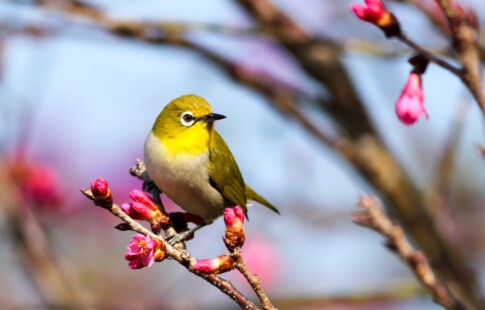
5 Things to Learn From Kenya’s Wildlife Conservation Strategy
We are reader-supported. When you buy through links on our site, we may earn affiliate commission.
Kenya is known for its wildlife. From elephants to cheetahs to rhinoceroses to zebras to baboons, the ecosystems in the country are beautiful and diverse. Many of these species, though, are endangered, threatened or vulnerable, which has caused Kenya to implement a new wildlife conservation strategy. Poaching, conflicts with humans, habitat loss and more all contribute to the dangers these creatures face. The government and various other groups in Kenya are working to fix these issues and conserve wildlife and recently launched a new wildlife protection strategy. Conservation efforts in Kenya are still far from perfect, but the nation has made some definite improvements in protecting its wildlife and ecosystems. In fact, there might be a few things we can learn from Kenya’s wildlife conservation strategy.
1. Consider Both Human and Wildlife Needs
One aspect of Kenya’s plan that has led to success is the fact that it accounts for the needs of both the animals and people involved. The welfare of animals and protecting the environment are key motivations for the program, but so are economic benefits. Ecotourism is a huge industry in Kenya that stimulates the economy and improves people’s standard of living in the country. Kenyans are aware that if the lions and rhinos die out, so will their tourism income. The conservation strategy emphasizes how attaining the goals of the program will help everyday people and local businesses, as well as wildlife and the environment.
2. Cooperation Is Crucial
Another pillar of Kenya’s wildlife protection plan involves facilitating more collaboration AMONG various government agencies. Cooperating with researchers and other governments could be helpful as well. Kenya has already started to do this by working with the U.S. Agency for International Development and the U.S. Department of Interior to fund its conservation strategy. The Kenyan government has also begun cracking down on wildlife workers that help poachers. Certainly, having a unified and organized approach will help the effort be more successful.
3. Utilize Technology
Kenya is also using technology to make its efforts more efficient and effective. For example, researchers recently used an aerial count of the elephant buffalo populations. They also plan to use drones to keep an eye on animal populations and potential poachers.
Using these technologies allows conservationists to survey more land faster and get more accurate data. It also keeps them safer, because they don’t have to venture out into the wilderness where they could come face-to-face with poachers, as well as wildlife and environmental dangers.
4. Involve the Local Community
Kenya’s strategy also involves encouraging local communities to actively participate in wildlife conservation strategies. In Kenya, the Maasai people live near the country’s wildlife parks and game lands. In Maasai culture, it is traditional for men to hunt lions when they are entering warriorhood. This began to contribute to a drop in lion populations. As an alternative to lion hunting, the African Wildlife Foundation, Maasai leaders and other local partners launched the Maasai Olympics, which included competitions involving many of the skills essential to lion hunting. In addition, conservation programs employ some Maasai people. Efforts like these, that get local people involved and benefit them, enormously boost conservation initiatives.
5. Take an Integrated Approach for Wildlife Conservation Strategy
There are many different factors that impact wildlife conservation, and Kenya takes as many of those into account as it can. Taking this integrated approach has contributed to its successes. Kenya is not only cracking down on poaching—it’s also cracking down on wildlife employees who help poachers, working with local communities and encouraging collaboration among government agencies. It’s also working to protect animal’s habitats, another major risk to wildlife. Additionally, Kenya is helping people protect their livestock from wild predators, change and replace traditions that harm wildlife and learn about the importance of these animals. It doesn’t just focus on the benefits for the animals, the ecosystem or even the planet. It also emphasizes the benefits to the very people they’re trying to reach. While Kenya still has a long way to go when it comes to wildlife protection, there are a few things other countries could learn from its efforts. They can observe what worked well and what didn’t and begin to implement Kenya’s best strategies to save their own wildlife. Kenya has an incredible and diverse animal population. Now, the world is hoping its diverse plan can save them.
Share on
Like what you read? Join other Environment.co readers!
Get the latest updates on our planet by subscribing to the Environment.co newsletter!
About the author
Jane Marsh
Starting from an early age, Jane Marsh loved all animals and became a budding environmentalist. Now, Jane works as the Editor-in-Chief of Environment.co where she covers topics related to climate policy, renewable energy, the food industry, and more.






